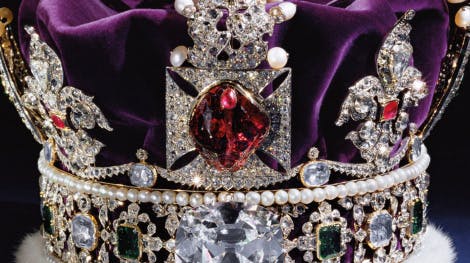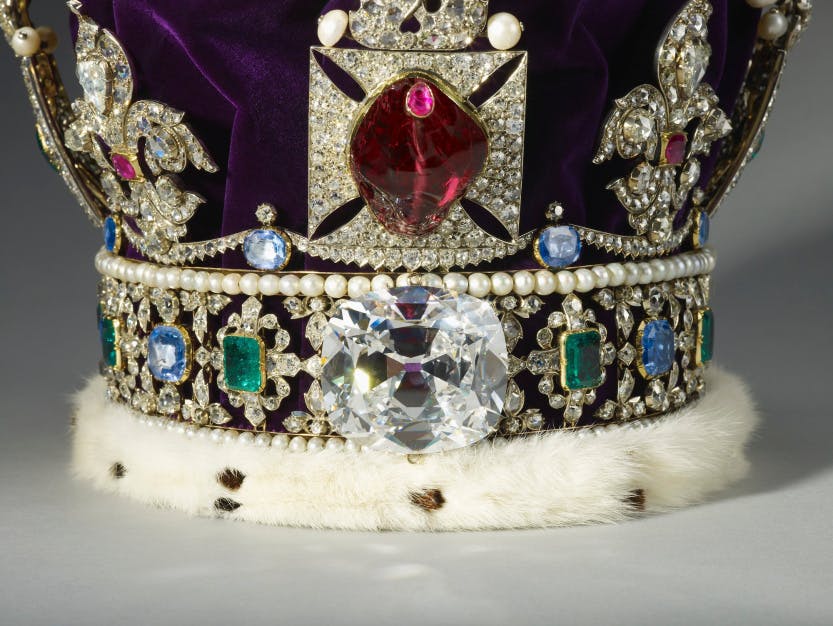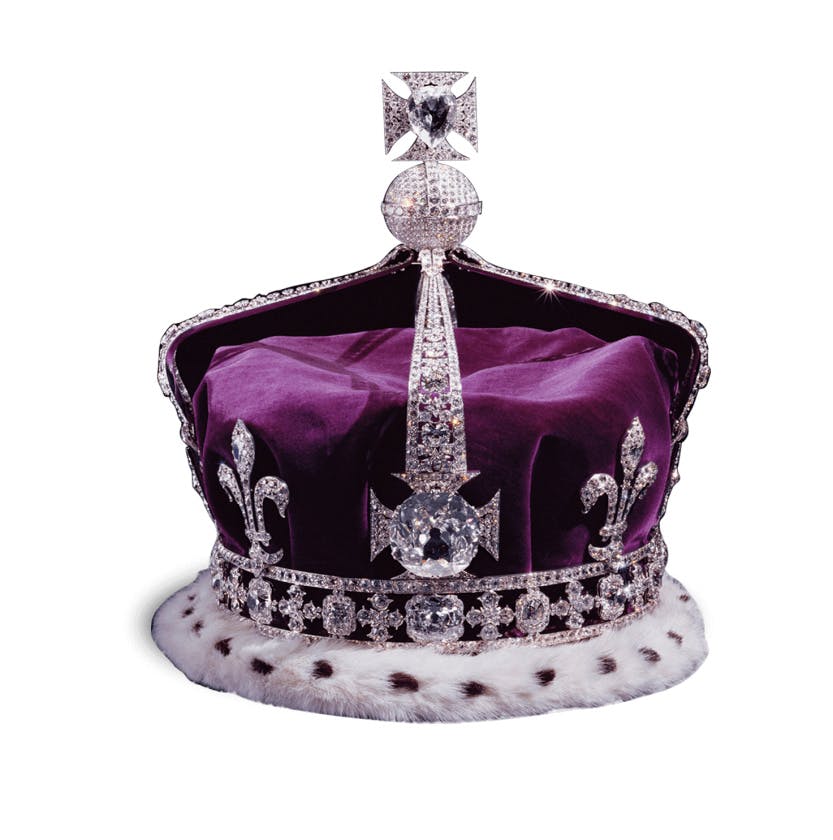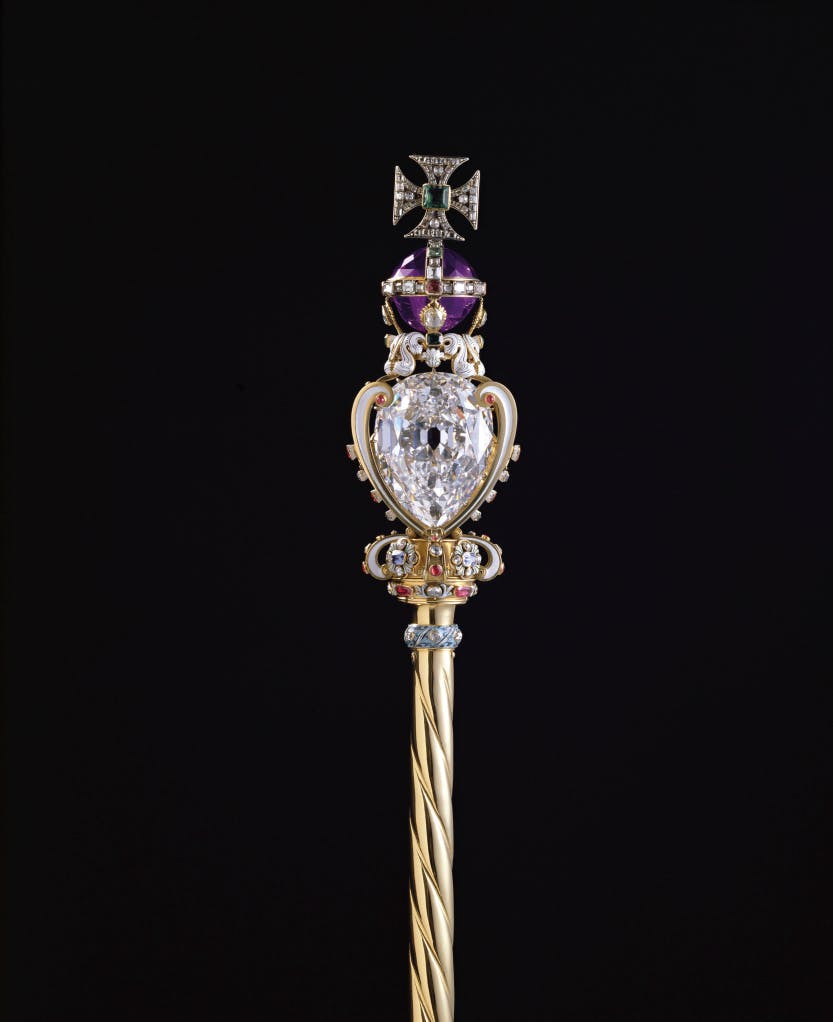The Imperial State Crown
The magnificent Imperial State Crown is worn by the monarch at the end of the coronation ceremony and at formal occasions like the State Opening of Parliament, reminding us the Crown Jewels is a working collection.
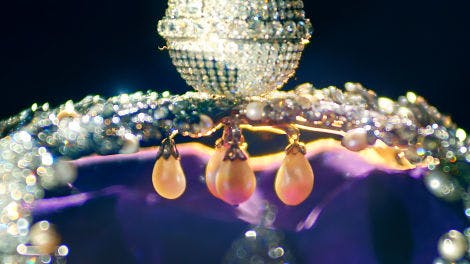
The Monde and Cross
Set with more than 650 rose and brilliant cut diamonds, the magnificent orb and cross originally adorned Queen Victoria’s State Crown of 1838. Below the monde hang four large pearls said to have once belonged to Queen Elizabeth I.

The Coronation Ceremony
The Imperial State Crown was first worn by Her Majesty Queen Elizabeth II when she processed from Westminster Abbey on the day of her Coronation on 2 June 1953. It was originally made for the Coronation of her father, King George VI in 1937.
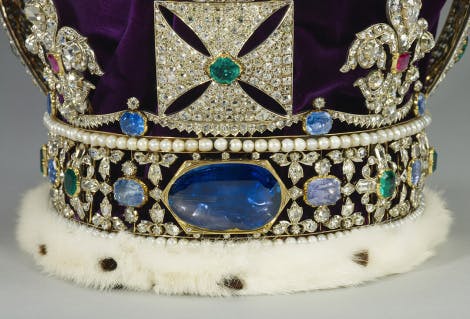
The Jewels in the Crown
The Imperial State Crown contains 2,868 diamonds, 17 sapphires, 11 emeralds, 4 rubies, and 269 pearls, and weighs over a kilogram.
Some of these gemstones, such as the Black Prince's Ruby have gained fascinating legends.
Image: Royal Collection Trust / © His Majesty King Charles III 2023


